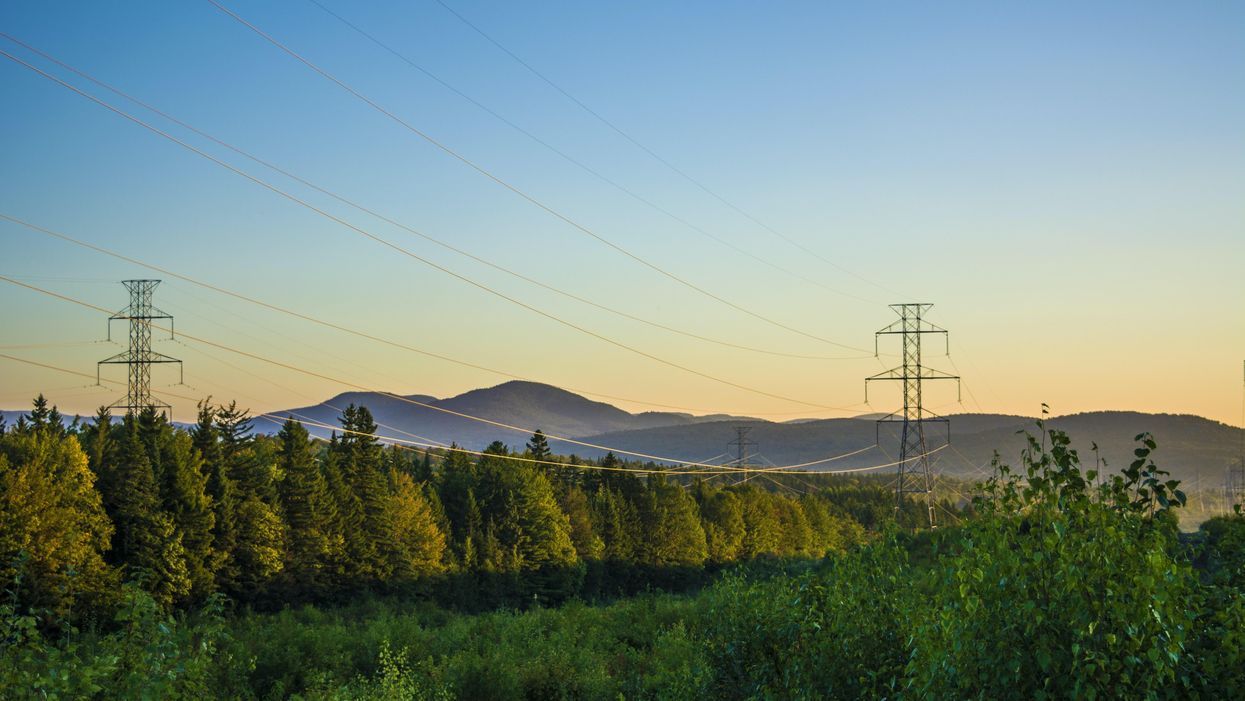
Set aside what you think about climate change, or what we ought to do to reduce carbon emissions. The reality is that America today simply doesn’t have the infrastructure required to maintain its demand for energy, from clean sources, dirty sources, or really anything in between.
This isn’t a blue or a red state problem. Texas’s energy grid failed a couple winters ago, just as California is facing rolling blackouts now amid a record-breaking heat wave. It’s not a fossil fuel vs. renewable concern either. Energy produced by coal, gas, wind, and solar is all difficult to transport and distribute across the country. And that’s driving up prices and limiting our ability to grow the clean energy economy. There’s one primary culprit: It’s too hard to build things in America.
This is part of the American economy that Americans rarely see—but that they likely always feel. If you want to build a wind farm in a particularly windy corner of the Midwest, or install solar panels on a particularly sunny patch of the countryside, you need then to construct transmission lines from where the energy is being produced to the place where it’s going to be consumed. It’s the same if you’re extracting natural gas or oil—you need some mechanism for getting the fuel to the place where it can be converted into electrical current, as we’ve seen in Europe, where pipelines from Russia to Germany are being shut down.
But at present, it’s almost impossible to get permission to build these sorts of infrastructure improvements here in the U.S. on any kind of reasonable timeline. There are environmental studies to be done. There’s permitting to complete. There are affected communities that need to sign off. And while all of that is appropriate—energy infrastructure should be built in a way that preserves the environment, leaves people to live their lives, and steers the country toward clean energy independence—you can’t let every potential objection or any potential trade-off stand in the way forever of completing the project. You need, at the end of the day, to have a moment where any given project is green-lit to move forward, or else given the heave-ho.
Those in the public and private sectors charged with the heavy responsibility of ensuring that Americans have the electricity required to keep them safe and comfortable—to reliably power their homes, schools, hospitals, factories and more—need to know when to fish or cut bait on a new idea. Absent that assurance, they’re not able to build the infrastructure that America needs. And absent that infrastructure, we’re almost sure to remain in a situation where we don’t have enough power to keep up with demand.
Sen. Joe Manchin (D-WV) has proposed a fix for this problem and he’s asked for a vote on it this Fall before the midterms. He doesn’t want to do away with all the environmental reviews and permitting processes that have been designed to ensure that projects are safe, that they minimize environmental impacts, and that they make sense for a nation that is striving to reduce carbon emissions and enhance its energy independence. He simply wants to create a better and more streamlined process for major federally funded infrastructure projects.
He argues that there should be enough time for whatever studies need to be done, whatever objections to be heard, whatever counter-proposals to be considered—but then the process should conclude. And the evidence suggests he is right as many countries in Europe—some with even tougher environmental standards than the U.S.—are able to build infrastructure much more quickly than we are thanks to streamlined regulatory processes.
Now, there are legitimate debates to be had in the realm of energy infrastructure. Some will want more of tomorrow’s energy to be produced from renewable resources—solar, wind, hydro—even if that energy is much more expensive than other sources, and even if those forms of energy require other tradeoffs, like importing raw materials for magnets and other parts from foreign adversaries. Others will take different points of view, arguing that it makes more sense to buy cheaper energy now so that the savings can be invested in more efficient and cleaner technology down the road. These are, of course, important debates to be had, and they’re worthy of further consideration.
What’s not right, however, is for those who hold various points of view on these bigger topics to use the permitting process as a way to hold projects in perpetual limbo simply because they want a certain outcome. You don’t want fossil fuel companies or their proxies holding up transmission lines that would bring clean energy from the Midwest to the coasts. You don’t want climate extremists to hold up energy pipelines because they only support wind and solar generation. If we give both sides the right to veto every project through delay, nothing gets built. And that’s our problem today.
Sen. Manchin’s proposal, for which support is building, simply takes a quiver out of the arsenal of those who would seek to impose their preferences on everyone by imposing delay upon delay upon delay. Not every project deserves to be built—not every addition to the nation’s energy infrastructure is a smart one. But every serious proposal deserves a fair and conclusive hearing with finality at end of an open process. That’s the root of Sen. Manchin’s proposal. It should not be controversial.

